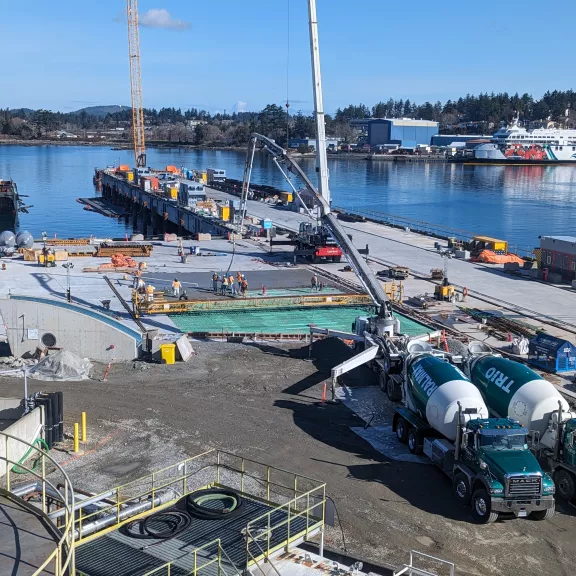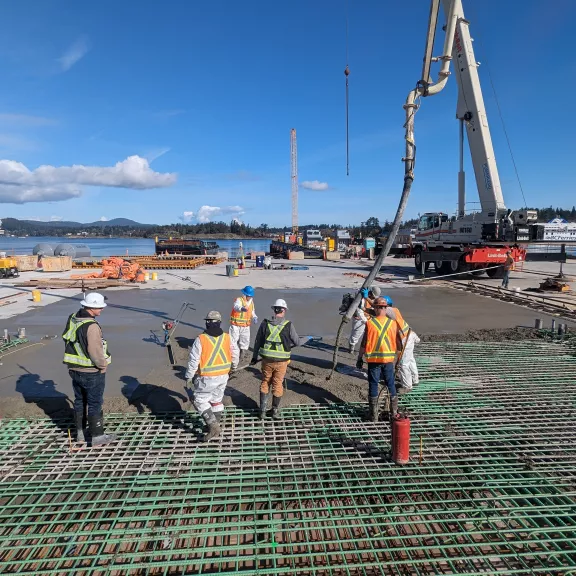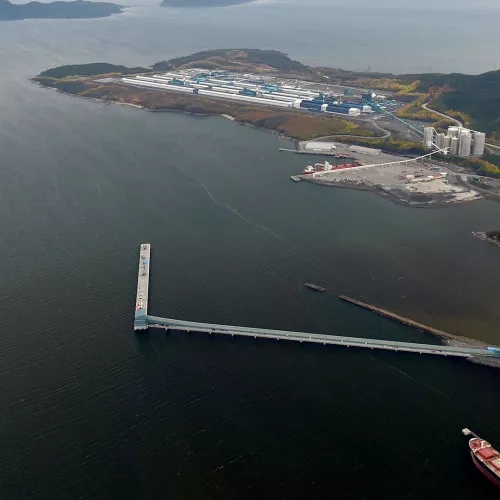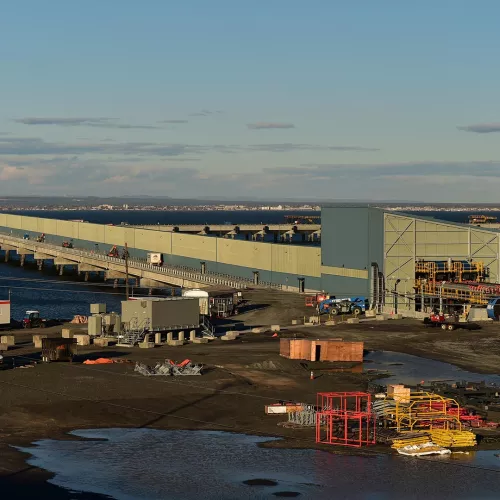
Rehabilitation of Jetties A & B at Esquimalt Dockyard
- Client
- Department of National Defence
- Sector
- Marine Works
- Delivery mode
- Lump Sum
- Location
- Victoria, BC, CA
- Year built
- 2024

Since 2017, Pomerleau has been working on Jetty A and B at Esquimalt Dockyard in Victoria, British Columbia.
Initially, we were awarded mandates for the deconstruction of Esquimalt Dockyard Jetty B and environmental remediation. Work included:
Preparation and implementation of a project management plan (design and construction).
Demolition of the existing jetty, jetty crane, associated equipment, buildings and utilities.
Dredging of jetty footprint (40,000 m³).
Excavation and removal of hazardous waste (805 m³) and residual soil (8,200 m³).
Construction of a new concrete tunnel, oily waste tank farm, electrical substation and interface control building.
Installation of temporary pumping stations.
Installation of electrical cables.
Environmental protection measures and monitoring.
In 2020, the Department of Defense awarded us the contract to rebuild Pier B and connect it to the future Pier A.
Here are some quick facts:
The final dimensions of jetty B are 283 m long and 26 m wide.
The connection to the future jetty A is 36 m long and 59 m wide.
30,000 m³ of poured concrete, equivalent to more than 3,000 concrete mixers.
273 one-meter-diameter piles were driven, some of them almost 100 m long.
1,800 m2 of tunnel surface were built inside the new Pier B.
13,000 m2 of seabed were covered with a granular layer of environmental protection.
More than 200 employees worked on-site during peak periods.
Up to 3 teams of divers with some fifteen barges worked simultaneously on a congested site.
Almost all the mechanical and electrical systems have been installed and commissioning has begun.
Structural work is now complete, and the end of the project is near.

Our Challenges
Presence of Hazardous Materials
We detected the presence of hazardous materials in the water, forcing us to implement an extensive environmental protection plan in collaboration with an environmental consultant.
Requiring Effective Communication
Since the site was always active, and many people had to work there simultaneously, we established exemplary and consistent communication and coordination.
Restricted Workspace
We carried out the work despite the restricted workspace on site.
Strict Criteria
The mandate required compliance with rigorous and complex specifications.
Special Equipment Required
We used special equipment such as cranes, excavators, concrete pumps, barges and barge-mounted equipment for dredge processing.
Structural Work in Tidal Zones
We performed a lot of formwork and concreting inside the tidal zone, which required excellent use of high and low tide windows, as well as seamless coordination with the diving teams.


